 Weird Stuff
Weird Stuff  Weird Stuff
Weird Stuff  Mysteries
Mysteries 10 Tragic Disappearances and Deaths in Joshua Tree National Park
 History
History 10 Ways Childhood Really Sucked in the Old West
 Music
Music 10 Name Origins of Famous Bands from the 1990s
 Religion
Religion 10 Biggest Turnarounds by the Catholic Church
 Weird Stuff
Weird Stuff 10 Unbelievable Times Laws Had Unintended Consequences
 Humans
Humans Ten Historic Women Who Deserve Way More Credit Than They Got
 Movies and TV
Movies and TV 10 Films That Spawned Major Lawsuits
 History
History Ten Times Towns Were Wiped Off the Face of the Earth
 Creepy
Creepy 10 of the Most Disturbingly Haunted Public Houses in the UK
 Weird Stuff
Weird Stuff 10 Niche Subcultures That Are More Popular Than You Might Think
 Mysteries
Mysteries 10 Tragic Disappearances and Deaths in Joshua Tree National Park
 History
History 10 Ways Childhood Really Sucked in the Old West
Who's Behind Listverse?

Jamie Frater
Head Editor
Jamie founded Listverse due to an insatiable desire to share fascinating, obscure, and bizarre facts. He has been a guest speaker on numerous national radio and television stations and is a five time published author.
More About Us Music
Music 10 Name Origins of Famous Bands from the 1990s
 Religion
Religion 10 Biggest Turnarounds by the Catholic Church
 Weird Stuff
Weird Stuff 10 Unbelievable Times Laws Had Unintended Consequences
 Humans
Humans Ten Historic Women Who Deserve Way More Credit Than They Got
 Movies and TV
Movies and TV 10 Films That Spawned Major Lawsuits
 History
History Ten Times Towns Were Wiped Off the Face of the Earth
 Creepy
Creepy 10 of the Most Disturbingly Haunted Public Houses in the UK
10 SWAT Team Assaults That Went Awry
Armed and equipped with military weapons and supplies, today’s Special Weapons and Tactics (SWAT) teams often resemble a military, rather than a police, force. Questioning the need for such militarization, critics suggest that it encourages police to think and act like combat forces rather than peacekeepers.
SWAT teams frequently invade US citizens’ homes in the middle of the night, frightening homeowners and their families and endangering innocent people’s lives. As indicated by these 10 SWAT team assaults that went awry, the results can be catastrophic and even fatal when highly armed police units burst into citizens’ homes.
10 Roberto Franco
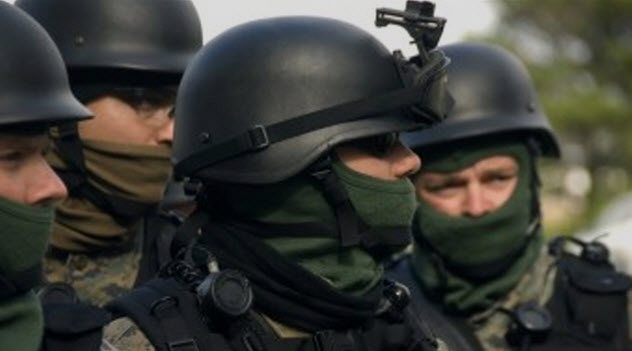
In Minneapolis–St. Paul, Minnesota in 2010, a SWAT team broke into the wrong house, killed the family’s dog, handcuffed the children, and forced them to sit near their dead, bloody, beloved pet for over an hour. They also handcuffed a young diabetic girl at gunpoint and denied her access to her medication. As a result, the girl suffered a “diabetic episode [due to] low blood sugar levels.”
The only one not handcuffed was an almost naked woman, whom police forced from her bed at gunpoint and directed to lie on the floor. Then the team ransacked the family’s belongings.
Roberto Franco, the head of the household, filed a federal lawsuit against the St. Paul police, a Drug Enforcement Administration agent, and members of the Dakota County Drug Task Force on behalf of himself and the other eight occupants of the house. This included his wife and two young daughters.
Roberto alleged that task force officer Shawn Scovill, who set up the raid, lied to the Minnesota District Court judge who authorized the search warrant and that neither Roberto’s name nor the name of any other family member was listed on the warrant. Instead, the name listed on the warrant was that of his neighbor.[1]
The SWAT team acted with negligence in “brutalizing” him and his family, Roberto asserted. The Ninth Circuit court denied the Department of Justice’s request for a summary dismissal of the lawsuit.
During the raid, police found a .22-caliber pistol in the basement. They said that the gun belonged to Roberto. However, Roberto’s lawsuit alleged that police perjured themselves during his trial, which resulted in his conviction for possession of the handgun.
9 Salvatore Culosi
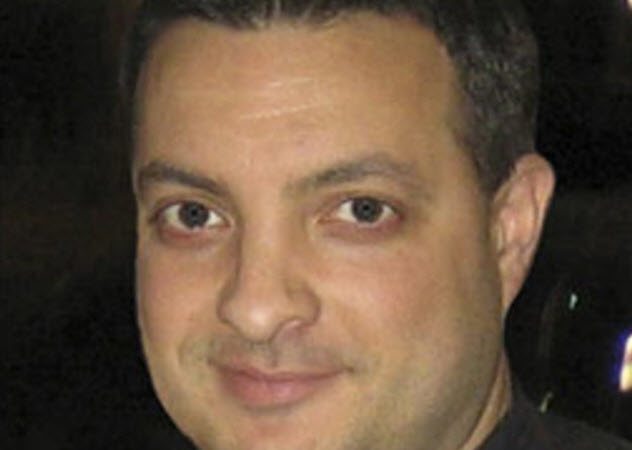
A resident of Fairfax, Virginia, 37-year-old optometrist Salvatore “Sal” Culosi sometimes bet $50 to $100 that the Washington Redskins or a local college team would win a particular game.
Fairfax police detective David J. Baucom set Sal up, encouraging him to bet more and more. Eventually, Sal was betting as much as $2,000 on a game, which made him eligible for prosecution under the state’s law against “conducting an illegal gambling operation.” In January 2006, after gathering the members of a SWAT team, Baucom called Sal to say that he was coming to Sal’s house to collect money that Sal owed him.[2]
When Sal came outside, SWAT officer Deval Bullock shot him. Bullock’s rifle, a semiautomatic Heckler & Koch MP5, had already been aimed at Sal. The bullet pierced Sal’s side and then struck his heart, killing him. Bullock claimed that his finger had slipped onto the trigger.
Police delayed notifying the victim’s family for over five hours, denying them the opportunity to arrange for Sal, a Catholic, to receive last rites. The officers also refused to release his body for two days. Finally, a funeral home was allowed to pick up the corpse.
8 Ronald Terebesi
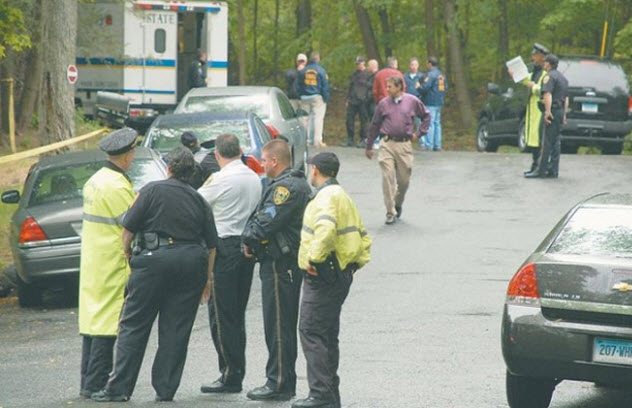
When SWAT team assaults go awry, authorities sometimes seek immunity from prosecution. They’re not always successful. In 2008, a Connecticut SWAT team’s raid resulted in severe injury to a 50-year-old homeowner and the death of his friend. The US 2nd Court of Appeals in New York disallowed the claim of immunity by Connecticut police, subjecting them to lawsuits that could cost the state millions of dollars in damages.
The decision allowed a judge to determine whether excessive force by five police departments violated homeowner Ronald Terebesi’s constitutional rights. The paramilitary force consisted of officers from the Easton, Monroe, Trumbull, Darien, and Wilton departments.[3]
They knocked down the door and tossed stun flash grenades into Ronald’s Easton home. Visitor Gonzalo Guizan, 33, died after being shot six times. He had been watching television with his host. Ronald received an injury severe enough to cause post-traumatic stress disorder after police struck him over the head with a gun. He also claimed that his civil rights were violated.
In February 2014, the towns paid a $3.5 million settlement to Gonzalo’s family.
7 Larry Harper

In October 1996, Larry Harper, 33, having relapsed in his use of crack cocaine, told his family that he no longer felt that life was worth living. As he left home with his handgun, his loved ones called the Albuquerque police for help.
The police responded by deploying a nine-member SWAT team with automatic rifles and stun grenades. “Let’s go get the bad guy,” Larry’s wife, Hope, heard one of the officers say as they hunted down her husband in the nearby park where he’d gone. In the meantime, Larry had decided not to kill himself.[4]
The officers found their quarry crouched behind a tree and shot him from a distance of 13 meters (43 ft), claiming that he was holding a gun. Albuquerque paid the Harpers $200,000 to settle their lawsuit out of court and no longer operate the SWAT team as a full-time unit.
Criminologist Peter Kraska, an Eastern Kentucky University professor, objected to the use of the paramilitary unit against Larry. “It is the militarization of Mayberry,” he said. “This is unprecedented in American policing, and you have to ask yourself, ‘What are the unintended consequences?’ ”
Larry, who committed no crime and threatened only himself, is dead.
6 Donnell Thompson
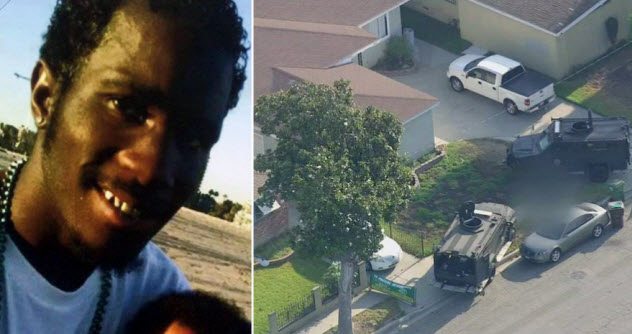
On July 28, 2016, in a predawn raid using armored vehicles, a heavily armed SWAT team descended on a residence in Compton, California, a community that’s home to a largely black population. Police confronted Donnell Thompson, an intellectually disabled, 27-year-old black man.
They set off flash-bang grenades and shot him with rubber bullets. When Donnell allegedly ran toward them, an officer shot him twice in the torso with an assault rifle and killed him.[5]
The authorities were actually seeking a carjacker. They arrested a suspect at about the same time that the SWAT team killed Donnell. Initially, the police claimed that Donnell was a second carjacker. But they later admitted that they’d killed an innocent man.
5 Jose Guerena

Jose Guerena, 26, was a Marine Corps veteran who’d served two tours of duty in Iraq. But he was killed in his Tucson home on May 5, 2011, in a SWAT team assault gone awry.
It was about 9:30 AM. Jose had just turned in, having worked 12 hours straight at a local mine, when his home was invaded. His wife, Vanessa, heard noises outside (later identified as flash-bang grenades) and spotted a man inside her home. Thinking he might be a criminal, she pleaded, “Don’t shoot! I have a baby!”[6]
Awakening, Jose told Vanessa to hide in the closet with their four-year-old son. To protect his family, Jose armed himself with his rifle and confronted the invaders. Within seven seconds, SWAT team members fired 70 bullets at Jose, 60 or more riddling their target. At first, police claimed that Jose had fired his weapon at them. Later, they admitted he had not. In fact, he hadn’t disengaged his rifle’s safety.
The SWAT team allowed Vanessa to take her son out of the house, but they wouldn’t let paramedics tend to their victim. More than an hour later, Jose died alone in his home. He had no criminal record, and no contraband was found inside his house. Police found little, if any, marijuana in any of the other houses the SWAT team had stormed into that morning as part of the same operation. No arrests were made.
4 Tarika Wilson
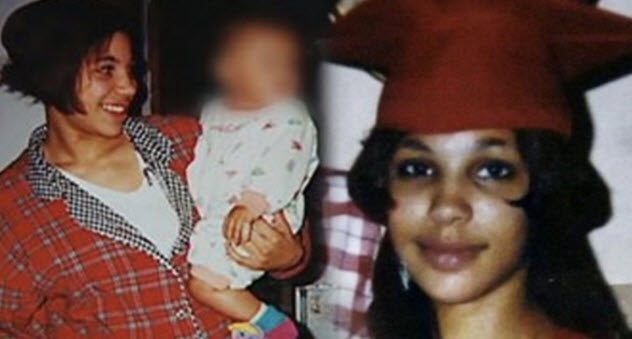
On January 4, 2008, a Lima, Ohio, SWAT team broke down the door to Tarika Wilson’s home and rushed inside, weapons drawn. They were intent upon arresting Tarika’s boyfriend, Anthony Terry.
Opening fire within minutes of the invasion, they killed Tarika, 26, and seriously wounded her 14-month-old son, Sincere. The SWAT team’s conduct didn’t surprise the city’s black citizens, who said that police harassment was widespread against blacks.
Although Sergeant Joseph Chavalia was placed on administrative leave, Lima Police Chief Greg Garlock said that there was no evidence of police misconduct in the raid that killed Tarika and injured her son. Tarika was never a suspect.
Chavalia was charged with recklessness for shooting into Tarika’s bedroom without being able to see clearly. But he was acquitted of criminal charges and allowed to return to work. Sincere had a finger amputated as a result of the raid. Tarika’s family accepted $2.5 million to settle their lawsuit against Lima, although officials admitted no liability.
Jason Upthegrove, president of the local chapter of the National Association for the Advancement of Colored People, said Chavalia “shot through a baby and killed an unarmed woman.”[7]
3 Bounkham Phonesavanh Jr.
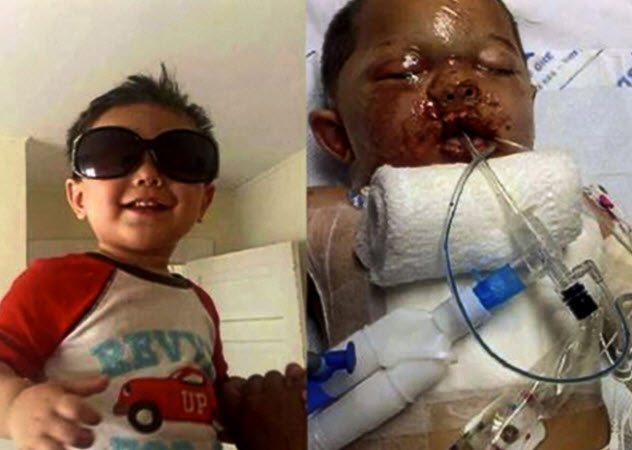
Alecia and Bounkham Phonesavanh owe $1 million in medical bills for the treatment of devastating injuries suffered by their 18-month-old son, Bounkham Jr. (aka Bou Bou) during a SWAT team assault in Cornelia, Georgia, in spring 2014.
The family of six had temporarily relocated to Georgia to be with relatives after their Janesville, Wisconsin, home was destroyed in a fire. The displaced family “crowded into a former garage converted into a bedroom.” But they planned to return to Wisconsin, where they’d found a new house.
At 2:00 AM on May 28, they awakened to the sound of a flash-bang grenade as a Habersham County Sheriff’s Office SWAT team stormed their bedroom. Bou Bou continuously screamed as an officer seized him, refusing to allow the baby’s mother to hold the boy.
Police told Alecia that her son had not been hurt in the raid, but that wasn’t true. He’d been severely injured by the grenade. Dr. Walter Ingram, head of Grady’s burn trauma unit, said, “His chest wall had torn down to muscle. And it tore his face down to bone, down to his teeth.” Bou Bou was in a coma for five weeks and has had several reconstructive surgeries.
The assault occurred because police were seeking the Phonesavanhs’ nephew, 30-year-old Wanis Thonetheva. According to an informant, Wanis lived with the Phonesavanhs. This tip was all the authorities needed to conduct the “no-knock” raid.[8]
A grand jury found the police’s conduct “hurried” and “sloppy” but refused to recommend criminal charges against any SWAT team member. It appears that the city enjoys immunity from any claims of negligence. The family filed a federal lawsuit against the task force, and a federal investigation of the SWAT team’s actions was initiated.
2 Alberto Sepulveda
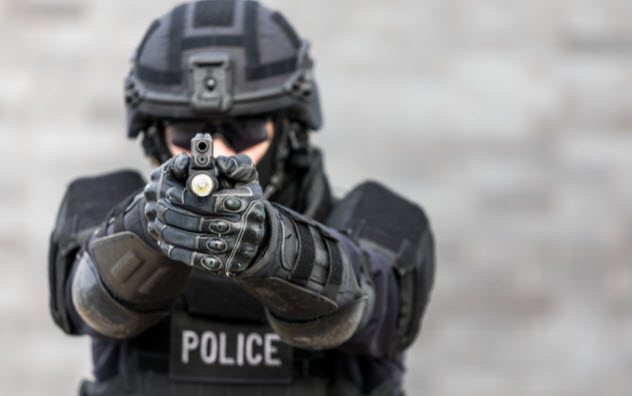
Early on the morning of September 13, 2000, a SWAT team burst into 11-year-old Alberto Sepulveda’s home and ordered him to lie facedown on the floor beside his bed with his arms stretched out. Alberto complied. His parents and brother were quickly gathered as well. They also obeyed the officers’ orders.
The SWAT team was serving Alberto’s father, Moises, with a federal arrest warrant in a drug trafficking case. In a supposed accident, the shotgun that a Modesto, California, SWAT team officer was holding on Alberto went off. The blast struck the child in the back and killed him.
Outraged, the Latino community demanded to know why the pre-raid surveillance conducted by the police hadn’t alerted them to the fact that children would probably be present in the home. The community also wanted to know why the authorities decided to arrest Moises at the family’s residence in the first place.[9]
Michael Garcia and other members of the Modesto chapter of the American GI Forum, a Latino veterans group, questioned why the SWAT team was deployed at all. “Why all these paramilitary tactics, this whole ninja way of breaking into somebody’s home to serve a warrant?” Garcia demanded. “It’s like a police state—not something I ever thought I’d see in my country.”
Criminologist Peter Kraska, the same professor who opposed the use of a SWAT team against Larry Harper, agreed with Garcia. The trend of using paramilitary police units to conduct raids on civilian suspects’ homes, he said, is as dangerous as it is unnecessary.
Nevertheless, such operations increased over 900 percent between 1980 and 2000. “Is it worth putting an entire family at risk, for what is sometimes a small amount of drugs, or small-time dealers?” Kraska asked.
1 Aiyana Stanley-Jones

Aiyana Stanley-Jones was only seven years old when she was killed in a May 2010 SWAT team assault. The Detroit home of the victim’s parents, Dominika Stanley and Charles Jones, was targeted in the midnight raid when police sought to arrest Aiyana’s uncle, the resident of an upstairs apartment, who was suspected in the recent murder of a teenage couple.
While an A&E film crew shot the scene for a television show, the SWAT team threw a flash-bang grenade into the home, igniting Aiyana’s blanket. Officer Joseph Weekley fired the bullet that went through the child’s head and killed her as she slept on a sofa. Her grandmother, Mertilla Jones, was close by.[10]
Weekley claimed that Mertilla had tried to wrestle his weapon away from him, causing it to fire. Mertilla was arrested but soon released. Aiyana’s parents were forced to sit in their daughter’s blood for hours. Weekley was tried twice for involuntary manslaughter in Aiyana’s death, but he was acquitted both times.
Members of the Detroit community wonder what possessed the authorities to use a SWAT team. The ACLU contends that the militarization of police forces across the US has led to “a culture shift” among civilian authorities. It increases the likelihood that paramilitary forces will be needlessly deployed against citizens.
Gary Pullman, an instructor at the University of Nevada, Las Vegas, lives south of Area 51, which, according to his family and friends, explains “a lot.” His 2016 urban fantasy novel, A Whole World Full of Hurt, available on Amazon.com, was published by The Wild Rose Press.
Read more about daring raids and shoot-outs on 10 Famous Hostage Situations and Top 10 Most Audacious Shootouts in US History.








